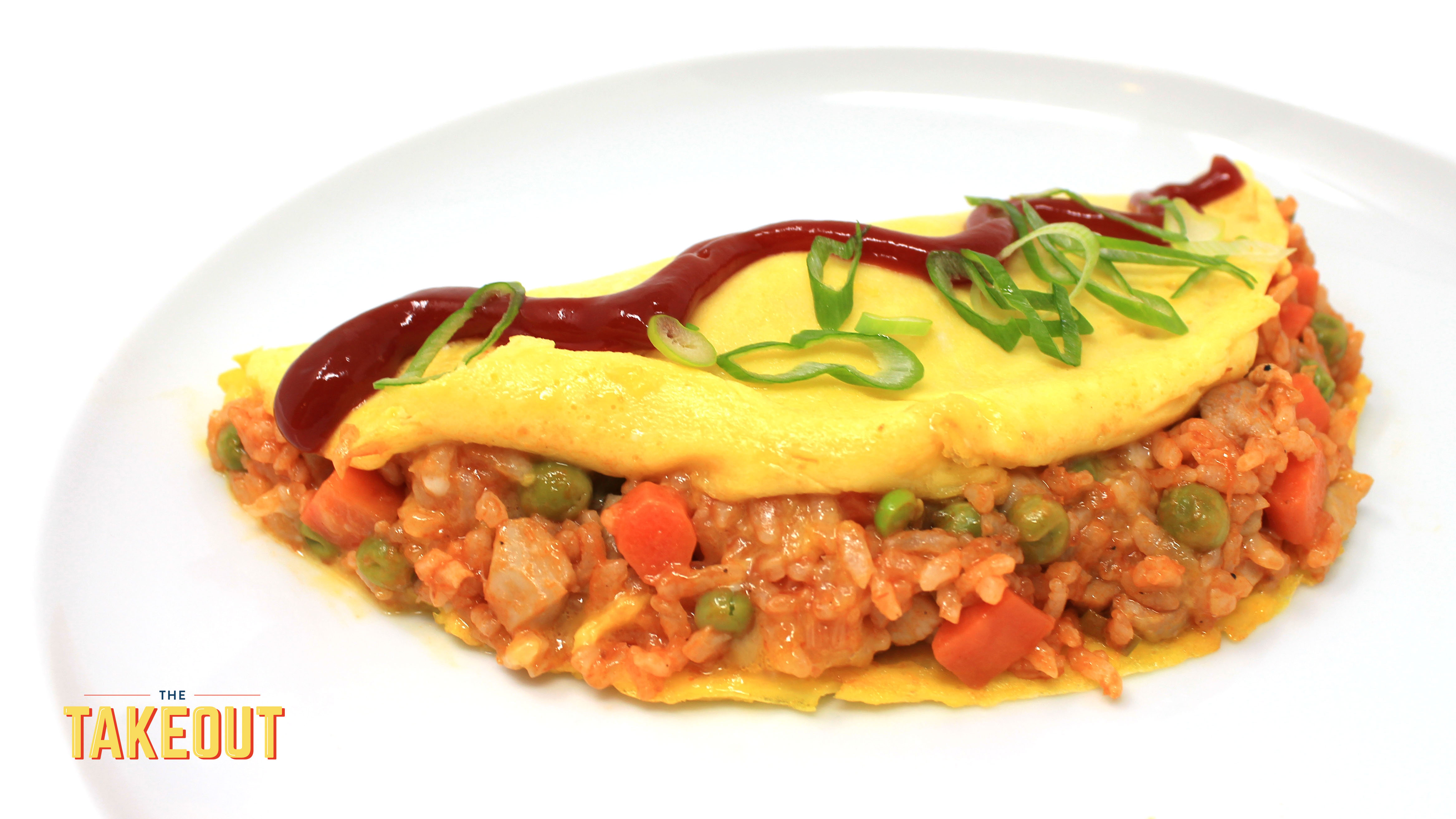Make Omurice, The Irresistible Japanese Ketchup Fried Rice Omelet—wait, Come Back
We may receive a commission on purchases made from links.
Japanese Western-influenced cuisine known as "yoshoku" reimagines popular Western ingredients with Japanese staples. A particularly popular dish called omurice—a contraction of 'omelet' and 'rice'—is a perfect example. A stalwart of children's menus, omurice is also a popular dish amongst Japanese home cooks and in Western-style diners. The secret: ketchup.
Hear us out.
In the beginning, the idea of rice cooked with ketchup and bits of meat and veg rolled in an omelet was an unappealing oddity to me. Was it fried rice out of a 1970s cookbook? Was it a misguided Sloppy Joe? In order to appreciate the omurice, I had to stop thinking of ketchup as a trash condiment, and embrace it as a sophisticated condiment. Is it not akin to a spiced tomato compote? Let's pretend it is. The self-delusion paid off—omurice is delicious and easy, and the sweet tomato flavor plays nicely with fluffy rice and egg.
In this recipe, adapted from Japanese Soul Cooking—one of the most-used books in our kitchen—cubed chicken and vegetables are simmered in a mixture of ketchup and broth until thick and glazed, then warm rice is stirred in. The rice mixture is spooned into the omelet and enclosed. You could absolutely use leftover rice, but I would make sure it's not fridge cold. You don't want to put clumpy cold rice into the egg, since there is really no cooking that happens after you scoop the rice into the waiting omelet.
Traditionally this is served with a stripe of ketchup down the middle of the omelet, but I'll be darned it I don't love it with tonkatsu sauce—imagine barbecue and Worcestershire sauce mixed together. To each her own. Just don't get fancy. I attempted to load ketchup into a child's medicine syringe in order to apply artful swirls on my first omurice, and ending up squirting pressurized ketchup onto the underside of my cabinets. I clearly had missed the point of the recipe. It's about comfort, not class.
It's hard to mess up, even when you mess up. Your eggs are overcooked and rumpled? Flop them out of the pan onto a waiting mound of the rice mixture, like a shameful blanket. This will still taste good. Your egg disk is pale and under cooked? Add the rice, fold it in half, turn the light down low, and cover the pan with a lid for a minute or two. The gentle heat will steam the egg until set. This too will taste good.
Don't get caught up in omelet-shape perfection either. All shapes will serve the purpose, whether it's an envelope fold (two sides up towards the middle), a quesadilla fold (once in half over the rice), or an I-give-up fold, in which you accidentally rip a hole in your omelet with your chopsticks and just willy-nilly tuck the egg over and around the rice mound.
If you use enough butter to evenly coat the pan, and a low flame, you shouldn't have these omelet problems. You will get better and faster the more you make. In a nod to that well-known lyric regarding problems, my personal mantra is 'More omelets, less problems'. And trust me, you will be making these filling omelets again and again.

Omurice
Serves two, adapted from Japanese Soul Cooking
8 oz. boneless skinless chicken thigh, cut in small cubes1 large carrot, peeled and diced1 large scallion stalk, finely sliced1/2 cup frozen peas, defrosted1/2 cup chicken stock1/2 cup ketchup4 cups cooked white rice2 Tbsp. butterSalt to tasteketchup or tonkatsu sauce
For the omelets
4 eggs2 tsp. milk2 Tbsp. butterSalt
Stir together chicken stock and ketchup until smooth and set aside.
In a large skillet, heat two tablespoons butter over medium-high heat. Add chicken cubes and sauté for one minute. Add the carrots and scallions and sauté for another three minutes. Add the ketchup mixture, turn up the heat and simmer it until most of the liquid has cooked out and the chicken mixture is glazed with a thick ketchup sauce, 5-7 minutes. Stir it frequently so the sugars from the ketchup don't burn. Add the rice, breaking up any clumps. Stir mixture together until well coated, add peas, and remove to a separate dish.
Clean the skillet. Beat together two eggs, one teaspoon of milk, and a pinch of salt. Melt a tablespoon of butter in the skillet, distributing it evenly. Pour egg mixtures into medium hot skillet, swirling to coat the bottom of the pan. Gently pull edges of the egg inward to allow uncooked egg to flow to the edge. You should have a smooth thin egg disk. Cover the pan, turn the heat down quite low and allow the egg to cook until the top of the disk is nearly solid. Fill half of the omelet with a large mound of warm rice mixture. Don't go crazy—you still want to the omelet to fold over neatly to enclose the rice, but it should be plump-looking. Use chopsticks or a spatula to fold the other half of the omelet over the rice, and slide onto your dinner plate.
Repeat omelet procedure above for second omurice. You will have rice filling leftover, but that's a good thing as it's still tasty the next day for lunch.
Drizzle the omurice with more ketchup, or as I do, a joyful zigzag of tonkatsu sauce.
